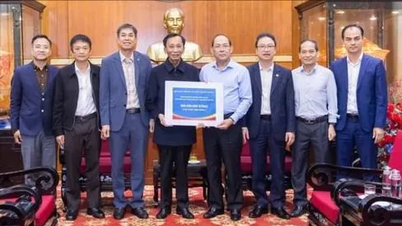Although China's legal framework has become more compatible with the TRIPS Agreement and WTO commitments, the practice of rights protection still poses many challenges, requiring businesses to be proactive, cautious and have a firm grasp of appropriate protection methods.
International businesses are often wary of the risks associated with counterfeiting, imitation, and the image associated with the “ world’s factory”. In fact, nearly half of all global industrial property applications are now filed in China, reflecting the high competitive pressure and urgent need for foreign businesses to protect and enforce intellectual property rights. Although the cost of registering and maintaining rights in China is considered reasonable, effective application of the law is not always easy. Experts agree that businesses can only minimize risks if they proactively assess risks from the stage of preparing to enter the market.

Due to the territorial nature of industrial property rights, registering a trademark, patent or industrial design in another country does not create protection in mainland China. Therefore, enterprises need to register directly with the China National Intellectual Property Administration (CNIPA) or use the Madrid system to designate protection in China. For registration through Madrid, obtaining a certificate issued by the Chinese authority is a necessary step to ensure smooth handling of infringement.
One of the important legal features that businesses must pay special attention to is the “first to file” principle. According to this principle, the first applicant will become the legal owner of the trademark if the trademark is not identical or similar to the registered trademark. This increases the risk of another entity applying for the trademark to be usurped if the business is slow in registering. The consequences may be that the business is forced to buy back the trademark at a high cost, face unfair competition or even be sued for using the previously registered trademark.
For businesses building a long-term development strategy, registering a Chinese version of their trademark is an important step to increase recognition and prevent the risk of name appropriation. In the field of geographical indications, China applies many protection methods, but collective trademark registration is considered the most effective and feasible method for foreign organizations.
The Chinese legal system also allows for utility model registration for inventions that are technically innovative but do not qualify for a regular patent. This form of protection is increasingly used by businesses due to its simpler procedures and broader practical protection. Choosing to register a utility model is a suitable option in cases where a business has exceeded the patent registration period.
In addition, China still maintains copyright registration procedures despite being a member of the Bern Convention. Registration at CNIPA brings great advantages in handling disputes, helping authorities have a clear basis to intervene and protect the rights of copyright holders.
Another important measure is to register intellectual property rights with Chinese customs. Once rights are registered in the import-export monitoring system, customs can detect, detain and handle infringing goods right at the border gate, helping businesses minimize losses from counterfeit and pirated goods and ensure transparent business operations.
Regardless of the method of protection chosen, foreign companies need to gather sufficient evidence of registration and evidence of infringement. This is a key factor when it comes to disputes in China, where the process requires close coordination with lawyers and legal experts familiar with the local legal system.
Proactively protecting intellectual property is not only a legal requirement, but also a prerequisite for international businesses to develop sustainably in the Chinese market, one of the world's largest production, consumption and innovation centers today.
Source: https://mst.gov.vn/nhung-luu-y-quan-trong-ve-quyen-so-huu-tri-tue-khi-doanh-nghiep-tham-nhap-thi-truong-trung-quoc-19725111615450289.htm



![[Photo] Prime Minister Pham Minh Chinh meets with representatives of outstanding teachers](https://vphoto.vietnam.vn/thumb/1200x675/vietnam/resource/IMAGE/2025/11/15/1763215934276_dsc-0578-jpg.webp)

![[Photo] General Secretary To Lam receives Vice President of Luxshare-ICT Group (China)](https://vphoto.vietnam.vn/thumb/1200x675/vietnam/resource/IMAGE/2025/11/15/1763211137119_a1-bnd-7809-8939-jpg.webp)

























































































Comment (0)